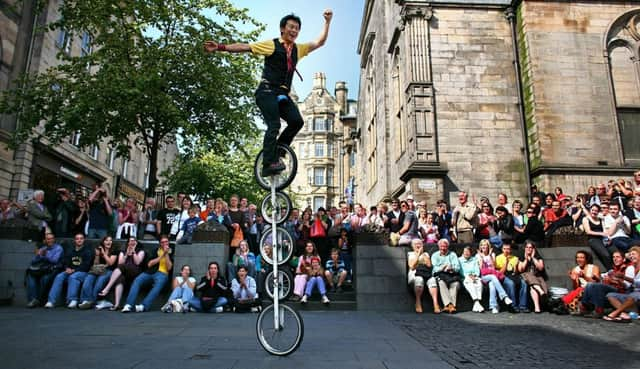Brian Ferguson: Festival tensions are rising ahead of 70th anniversary


The Edinburgh International Festival may have finally brought its dates back into line with the Fringe in 2015. But the breakaway from August of the film and jazz festivals mean they have wrapped long before the big beasts, including the Tattoo, burst into life this week.
While other big festivals around Scotland have failed to appear this year, Edinburgh’s seem to be booming like never before and its season is longer than ever.
Advertisement
Hide AdAdvertisement
Hide AdThe extravaganza about to unfold will once again be the envy of the world, particularly with its 70th anniversary at the heart of marketing campaigns.
For many of those involved in the Edinburgh Festival, its founding post-war principles of using the arts as a force for good, of healing divisions, removing barriers and welcoming the world has never been more relevant.
Without any distractions from big sporting events, this year has all the makings of a vintage season.
Yet significant tensions are bubbling below the surface.
These have been thrust into the public domain just before the festivals by the Edinburgh World Heritage trust, which has warned the “fragile, historic city” is at risk of becoming a “hollow shell” due to the vast numbers flocking to it.
The watchdog drew comparisons with Venice, which has been forced to introduce measures to control numbers, warning “commercial over-exploitation” is threatening Edinburgh’s authenticity and will damage its appeal if warnings about “capacity limits” go unheeded.
While EWH was careful not to mention the festivals, the timing was no coincidence.
The initial response from the tourism industry, which hit back with claims of “sensationalism,” was the equivalent of burying heads in sand. As far as the sector is concerned, Edinburgh’s appeal to visitors “is not going to change” and such fears are simply scaremongering.
Advertisement
Hide AdAdvertisement
Hide AdWhat may have to change, though, is how the festivals are spread across the city, to help alleviate pressure on key parts of the Old and New Towns.
While the city council has shown reluctance to be drawn into the debate, the EWH warnings have provided arguably the biggest challenge for its new SNP-Labour administration, which is also grappling with the impact of the terror attacks in Manchester and London.
The new bright yellow barriers that will become a familiar sight over the next few weeks will help test the city’s safety and security preparations like never before.
But they may also test the patience of many residents and workers who already see August as a period of inconvenience and annoyance.
A growing anti-tourism feeling has been noticeable in the city for some time, which politicians representing the city centre are acutely aware of. The onus is on them to respond.
To be fair to the festivals, much of this anti-tourism feeling is down to the lack of control of letting out private flats, the creation of holiday apartments and a rash of budget hotels.
Designs for new hotels earmarked for the old Royal High School and the St James Quarter have fuether fuelled anger. The jury is still out on sweeping changes to St Andrew Square, setting for the big EIF opening event, which is fast becoming dominated by bar and restaurant chains.
Advertisement
Hide AdAdvertisement
Hide AdHowever it is the festivals that provide the biggest test of the city’s infrastructure and the next few weeks should also provide the best opportunity to have a serious look at how to improve the historic heart of the city in future when it is rolling out the welcome mat to the world.